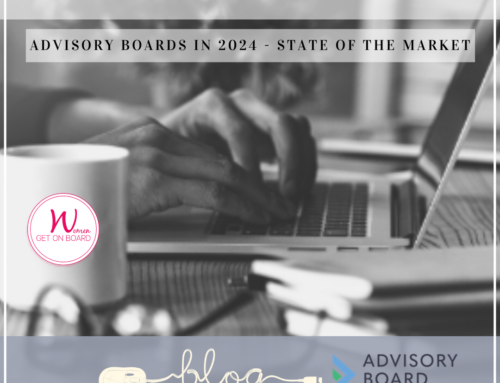Agents of Change: Alyssa Barry and Caroline Sawamoto, Principals & Co-Founders of irlabs
Women Get On Board Inc. (WGOB) is a member-based company that connects, promotes and empowers women to corporate boards. This is the first installment of Agents of Change, our new series that profiles women in the WGOB community who are taking exemplary actions to champion board diversity.
Alyssa Barry and Caroline Sawamoto, Principals & Co-Founders at irlabs, specialize in shareholder communications and driving change on corporate boards. With decades of experience in investor relations and shareholder activism, the pair understand exactly what it takes to advocate for diversity at a board level and make a lasting impact.
Caroline and Alyssa have funnelled that knowledge and passion into their new investor relations firm, irlabs. The company is only six months old, but it has already made a big splash on the Canadian business landscape. Their robust business model has attracted a large client roster in record time.
One of irlabs’ clients is The Planting Hope Company. Notably, the sesame milk company is led by an all-female executive and board. With the support and expertise of irlabs, the Chicago-based firm went public in November on the TSX-V in a landmark $9-million deal.
Alyssa and Caroline believe in working with companies that value diversity—it’s one of their guiding principles. As they point out, bringing more women and diverse candidates onto boards is not only the right thing to do, but it makes good business sense.
“Studies show that having women on your board is good for your bottom line, and it helps you develop the raw talent pool at all levels,” says Caroline. “It’s a good business plan to have diverse board members.”
Caroline and Alyssa are not alone in that belief. In their recent work, both leaders have seen an increased shareholder interest in board diversity. Institutional investors are raising the topic more often and telling companies that they expect to see people with different backgrounds around the boardroom table.
For fellow board diversity agents of change, Alyssa and Caroline have a few key pieces of advice.
Reflect
First, dedicate time to reflecting on the current makeup of your board. How diverse is it? In addition to considering gender and backgrounds, leaders should evaluate the diversity of opinion, experience and tenure.
“If there’s a board that has not refreshed in the last ten years and it’s the same people around the table, you could be lacking innovation,” said Alyssa.
Once you understand the current state of your board, you can recruit diverse directors who bring in new ideas, expertise and talent.
Start the conversation
It’s not always easy to raise the issue of board diversity, but it’s vital to start the conversation. When framed correctly, these discussions drive powerful and constructive change.
Emphasize to board members that bringing on diverse candidates is not a symbolic effort. Diversity enhances a board’s efficacy and capability. Remember, directors are often shareholders who want to see the share price increase over time, so they should be open to proposals that ultimately create value for all investors.
It can also help identify the board’s skill and experience gap using a board skills matrix. Once you identify those gaps, search for who can fill those spaces and increase the board’s scope of expertise. This approach may help leadership see diversity as an opportunity rather than a “checking-the-box” exercise.
Be proactive
To acquire the strongest candidates, boards cannot afford to wait until the last minute. Seeking out qualified directors from diverse backgrounds can take time, and if boards are serious about driving positive change, they need to prepare for a lengthier search.
Instead of waiting until a few weeks before candidates are due to be announced to shareholders, Caroline and Alyssa recommend starting the search early. In fact, it is prudent to keep succession planning and diversity in mind constantly, so the board is always prepared when openings arise.
Expand your outreach
To acquire a diverse crop of great candidates, Alyssa suggests “casting your net far and wide.” Go beyond the Rolodexes of the current board members by reaching out to recruiters, combing LinkedIn and leveraging the networks of organizations (such as WGOB) that champion board diversity.
Alyssa and Caroline have consistently found that this extra outreach pays off. They have seen firsthand how diverse boards create lasting growth and better outcomes for shareholders.
“It’s good business, it’s good common sense and it generates better results,” Alyssa said.
As for women who are searching for board opportunities, Caroline has some straightforward advice.
“Don’t be afraid to go and put yourselves out there.”
She and Alyssa both agree that female candidates should target companies that interest them and reach out. In many cases, even if an opportunity isn’t available, companies and activist investors will keep names on file to consider for future openings. So if you know your qualifications are a great fit, do not be afraid to take the leap.
With so much positive momentum building, there is no better time to become a champion for board diversity, whether you are a board director, an investor, a senior leader or a consultant. Caroline and Alyssa’s success is a powerful example of what is possible when you choose to become an agent of change.





